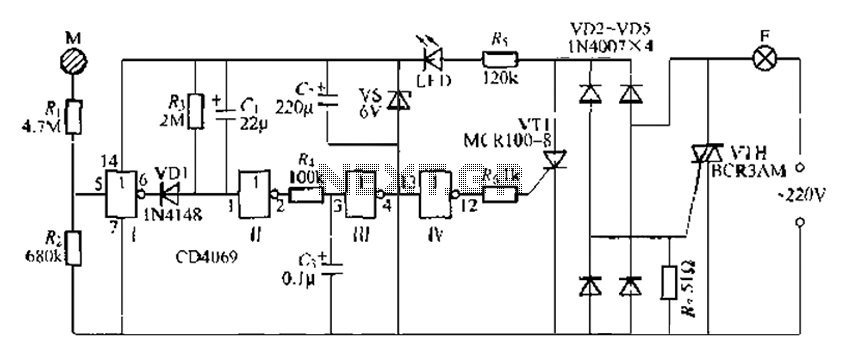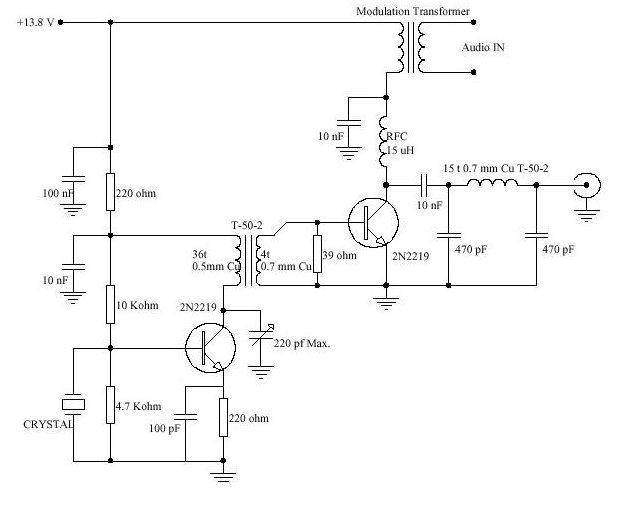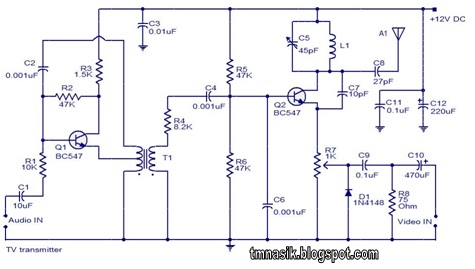
Lighting inverter circuit principle 6 ~ 8W fluorescent

The lighting inverter circuit is designed for 6 to 8W fluorescent tubes. This circuit is appropriate for powering fluorescent tube circuits within the specified wattage. The parameters for the circuit are indicated in the accompanying figure. When utilizing a fluorescent tube of this wattage, the supply voltage should range from 6 to 12V, with a current draw between 0.3 to 0.6A. The non-starting voltage across the lamp typically ranges from 45 to 65V.
The lighting inverter circuit for 6 to 8W fluorescent tubes operates by converting low DC voltage from a power source into a higher AC voltage necessary for the ignition and operation of the fluorescent lamp. The circuit typically comprises an oscillator, a transformer, and a rectifier. The oscillator generates a high-frequency signal that drives the transformer, which steps up the voltage to the required levels for the fluorescent tube.
The circuit parameters include a supply voltage of 6 to 12V, which is suitable for battery-powered applications or low-voltage power supplies. The current specification of 0.3 to 0.6A indicates the operational range of the circuit, ensuring that the inverter can handle the load without overheating or failing. The non-starting voltage of 45 to 65V is crucial, as it is the minimum voltage required across the lamp to initiate the ionization process within the gas-filled tube, allowing it to emit light.
The inverter circuit typically includes components such as resistors, capacitors, and inductors, which are carefully selected to ensure reliable operation. The oscillator may employ a simple transistor-based design or a more complex integrated circuit for improved efficiency and performance. The transformer must be rated to handle the required output voltage and current while maintaining minimal losses.
In summary, the lighting inverter circuit for 6 to 8W fluorescent tubes is a compact and efficient solution for low-voltage lighting applications, providing the necessary voltage and current to operate fluorescent lamps effectively. Proper attention to component selection and circuit design is essential to achieve optimal performance and reliability. As shown for the lighting inverter circuit principle 6 ~ 8W fluorescent. The circuit is suitable for lighting 6 ~ W fluorescent tube circuit parameters are marked in the figure . When using the W fluorescent general, the supply voltage is 6 ~ 12 V, current 0.3 ~ 0.6 A, non-starting voltage across the lamp during about 45 ~ 65V.
The lighting inverter circuit for 6 to 8W fluorescent tubes operates by converting low DC voltage from a power source into a higher AC voltage necessary for the ignition and operation of the fluorescent lamp. The circuit typically comprises an oscillator, a transformer, and a rectifier. The oscillator generates a high-frequency signal that drives the transformer, which steps up the voltage to the required levels for the fluorescent tube.
The circuit parameters include a supply voltage of 6 to 12V, which is suitable for battery-powered applications or low-voltage power supplies. The current specification of 0.3 to 0.6A indicates the operational range of the circuit, ensuring that the inverter can handle the load without overheating or failing. The non-starting voltage of 45 to 65V is crucial, as it is the minimum voltage required across the lamp to initiate the ionization process within the gas-filled tube, allowing it to emit light.
The inverter circuit typically includes components such as resistors, capacitors, and inductors, which are carefully selected to ensure reliable operation. The oscillator may employ a simple transistor-based design or a more complex integrated circuit for improved efficiency and performance. The transformer must be rated to handle the required output voltage and current while maintaining minimal losses.
In summary, the lighting inverter circuit for 6 to 8W fluorescent tubes is a compact and efficient solution for low-voltage lighting applications, providing the necessary voltage and current to operate fluorescent lamps effectively. Proper attention to component selection and circuit design is essential to achieve optimal performance and reliability. As shown for the lighting inverter circuit principle 6 ~ 8W fluorescent. The circuit is suitable for lighting 6 ~ W fluorescent tube circuit parameters are marked in the figure . When using the W fluorescent general, the supply voltage is 6 ~ 12 V, current 0.3 ~ 0.6 A, non-starting voltage across the lamp during about 45 ~ 65V.





